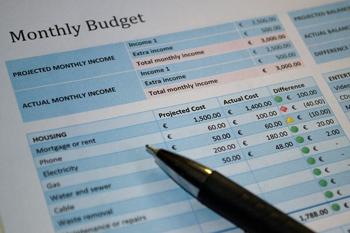Most supply chain professionals would benefit from some training in accounting. I am surprised by the number of times I encounter people holding positions of responsibility who just don’t understand the numbers well enough.
I must admit that accountants don’t make it particularly easy. Take cashflow calculations as an example. There are two ways of doing it: the accounting way and the way that makes sense, which is how everybody else does it. Everybody else looks at the cash in the bank account and sees a beginning balance, deposits, withdrawals, and an ending balance. It’s simple, straightforward, and easily understood. The accounting way starts with earnings; makes a number of adjustments for noncash expenses; corrects for changes in inventory, payables, and receivables; makes other graceful manipulations, and then arrives at the same answer as the easily understood method.
For those in the supply chain using financial statements to perform due diligence on a new supplier, I ask:
- What is goodwill, and how much is acceptable?
- How much debt is OK?
- If a company has posted losses over the previous three quarters and is profitable this quarter because of a onetime IP license sale, should you be concerned?
If you are unable to answer these questions, accounting guidance would be advantageous.
Cost and confusion
Costing is another area where I see confusion. Some people grow dependent on their costing system as if it were absolutely meaningful. These systems measure only internal performance, often giving a false sense of achievement against the market. To illustrate my point, let me explain two costing systems: standard cost and actual cost.
Standard cost systems originated before there were computers to help manage costs. Periodically, standards are set for material price, yields, labor hours and rates, production levels, and more. There is nothing in the accounting rules that say these standards have to be accurate. In fact, they are often set to achieve different management purposes. One example is concealing true costs from the sales team, so that they don’t set a product’s price too low.
Throughout the reporting period, variances are measured against standards. These are reported as purchase price variance, yield variance, labor rate variance, etc. Managers and employees are congratulated on improved performance against standards — another reason they are often not set near actual results. In this internal management system, revaluations are required before actual costs can be recorded in the company’s financial reports.
Close but not perfect
Actual cost systems try to get around the setting of standards by using actual costs. It’s like tracking the standard with variances in real-time by reporting the actual costs. Both systems run aground when they need to allocate indirect or fixed costs to production units. I view actual cost systems as better than standard but certainly not perfect.
Now, does good performance within a standard or actual cost system tell you anything about how the company’s production costs are really doing? Expressed another way, can these systems tell you if a company with a 15 percent improvement in standards is doing better than the competition? How could they?
Improvements against standards may lag real performance levels. Simply put, performance against standards (plus variances) can be poor compared with the competition, but the congratulations are handed out just the same. Without some type of benchmarking providing real-world insight, companies just don’t know, and they can fall farther and farther behind.
Numbers are a valuable asset, but don’t get lost in them.
By Ken Bradley – Lytica Inc. Founder/Chairman/CTO

